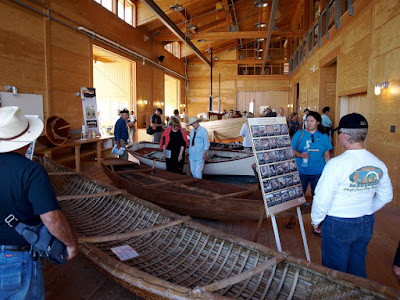
Only nineteen days until Christmas!
Of course the merchants have been extolling all of us to start celebrating yesterday! Buy now! (and jump start the final fourth-quarter days). Seems to me that this push starts earlier each year. Soon we'll have Christmas sales starting right after Labor Day (did you just say that they already have?).
But to a deeper level. A singular character invoked at Christmas time has many, many names: Saint Nicholas; Santa Claus; Sinterklaas (also called Sint-Nicolaas or De Goedheiligman) Dutch; Saint Nicolas, French; Bishop of Myrna,
Right here in Seattle we have a constant reminder. Saint Nicholas Cathedral on Capital Hill, on 13th between East Howell and East Olive, is one of the oldest parishes of the Russian Orthodox Church outside of Russia in the United States, founded in 1932 by Russian immigrants who fled the Communism that invaded their homeland after the 1917 Russian Revolution.
But it is not just the young, and the young at heart, who celebrate St. Nicholas.
Sailors also claim St. Nicholas as their patron, carrying stories of his favor and protection far and wide, and St. Nicholas chapels were built in many seaports in the Mediterranean and beyond.
Nikolaos, is the patron saint of Greece, where his primary role is as the protector of sailors and seamen. At Christmas small fishing boats honor him, especially in the islands, with decorations of blue and white lights. Tradition has it that his clothes are soaked with brine, his beard always dripping with seawater, and his face covered with perspiration because he has been fighting storms to reach sinking ships and save men from drowning.
Greek ships carry an icon of St. Nicholas, as he is regarded as master of wind and tempest. Sailors light a candle before the icon, a small model of a ship, praying for safe passage. When a ship is in danger the captain prays making a solemn promise to bring a tamata, a model of a small ship of silver, gold, or carved of wood, if they make port safely. On return from such a voyage, the captain and sailors take the model (or painting), representing their ship, to church. In thanksgiving for their safety, they place it before a St. Nicholas icon. It is given as testimony to protection received, not as intercession for future aid
Revered as the great protector, St. Nicholas' feast is one of great devotion. The Greek Navy pays tribute to the patron saint of sailors with a special ceremony at the Hellenic Naval Academy.
Devotion to Saint Nicholas is also shown by the many small white chapels that dot the coastline. These chapels, dedicated to Satin Nicholas, have been built in gratitude to God for protection on the seas. As nearly every island family has members working in shipping, the navy, fishing or sponge diving, it is customary for folks passing one of these chapels to enter, light a candle, and pray for their friends' and relatives' protection from turbulent seas. Many families name a son "Nikolaos" in honor of the saint.
St. Nicholas, patron saint of sailors, is also part of Epiphany celebrations held by the sea. Priests bless ships anchored in harbor, in St. Nicholas' name, asking him to watch over each one, bringing it safely through storms and back to harbor. Ships then blow their whistles and church bells ring as a cross is thrown into the water. Sailors dive to see who can retrieve the cross.
So today, St. Nicholas' Day, December 6th, you sailors and mariners, remember our patron saint as you make plans to cruise the Salish Sea.
And perhaps coincidence, but tonight is also the Seafair & 76 Special People's Holiday Cruise when nearly 400 decorated boats will host approximately 4,000 developmentally disabled guests for a special cruise around Lake Union and Lake Washington, no doubt making St. Nicholas' heart glad.
Cut some slack for the commercial hype that permeates these days.
Let the young anticipate the joy of Santa Claus.
And for those of us who will celebrate nineteen days hence the birth of the Christ Child, let us one and all rejoice!
For a good telling of the legend of St. Nicholas, go to Customs of Advent and Christmas, as told by Victor Hoagland, C.P. (It's almost a 4th century economic recovery plan). The icon is by Aristidh Milaqi "Saint Nicholas, the Patron Saint of Sailors" (Icon on wood, 2009)



































